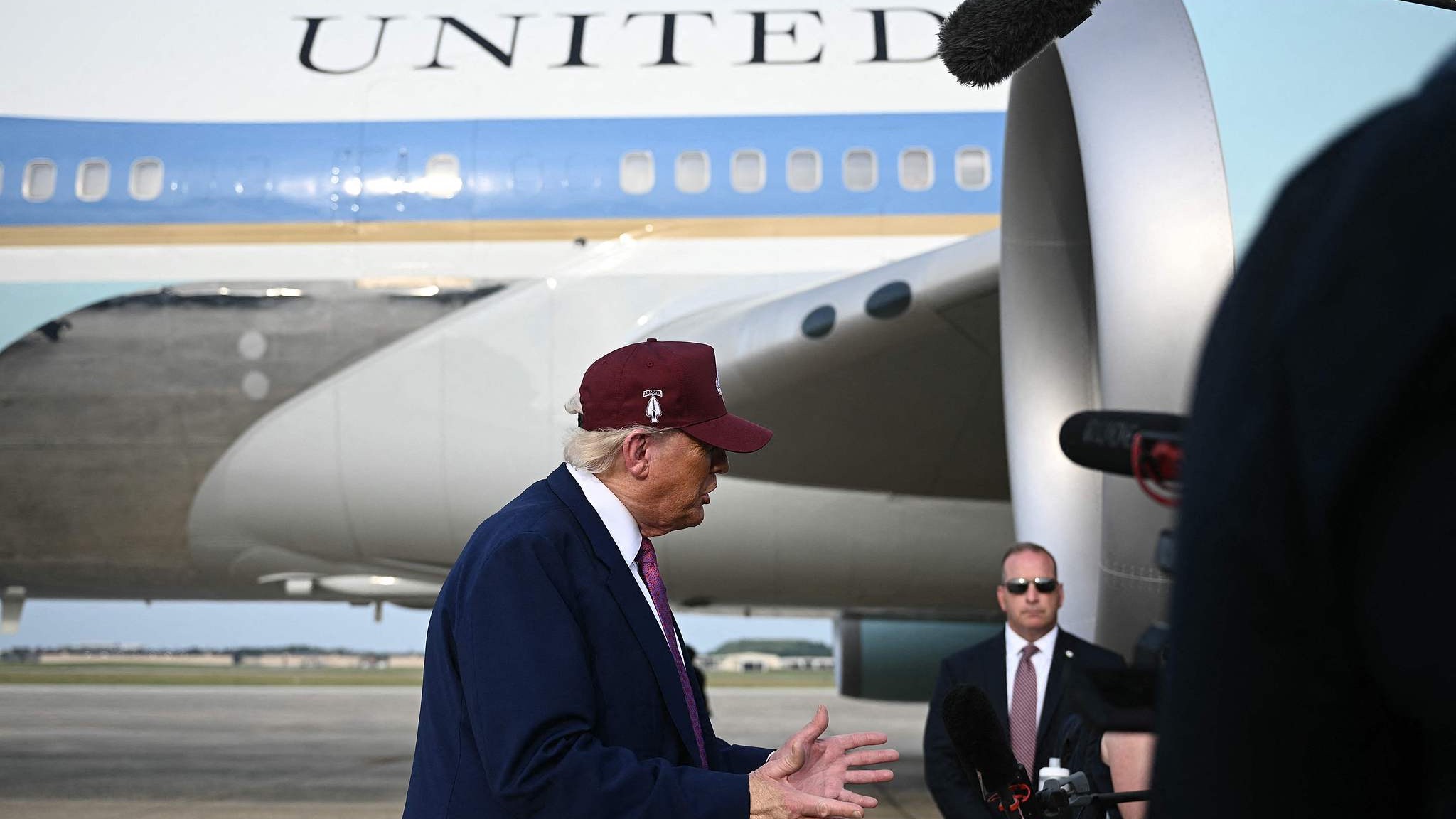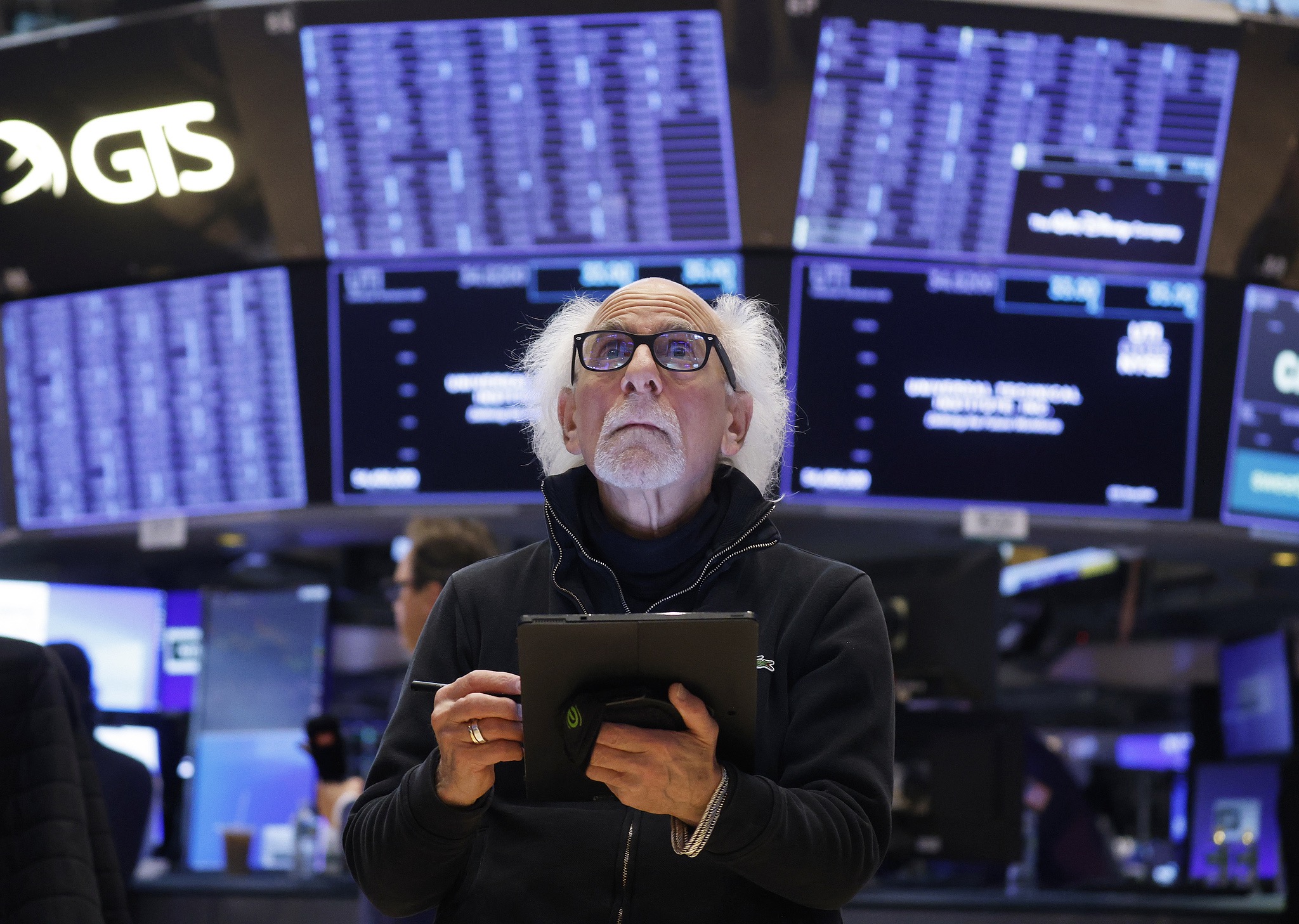Home > > Can America truly be great again?
Can America truly be great again?

U.S. President Donald Trump speaks to reporters after stepping off Air Force One at Joint Base Andrews, Maryland, the U.S., June 10, 2025. /VCG
Over the past three months, the world has witnessed a wave of "reforms" in the United States. But rather than overcoming the systemic flaws, these presumed transformations have only served to deflect and obscure the deeper contradictions within U.S. society.
Political reform: Power consolidation in disguise
The new U.S. administration came to power largely due to widespread public dissatisfaction with the status quo. Before the 2024 U.S. presidential election, a poll by NBC News found that two-thirds of American voters believed the U.S. was on the wrong track, and that the cost of living remains "the dominant issue."
Once in office, the new administration launched a rapid restructuring of the federal bureaucracy, dismantling dozens of agencies and laying off hundreds of thousands of civil servants in the name of "efficiency."
But this "shock therapy" came at a steep cost. The public service system was severely weakened, and within just 100 days, the president's approval rating plummeted to 39 percent – the lowest for any U.S. administration in nearly 80 years. Meanwhile, sweeping executive orders triggered legal battles and intensified partisan conflict.
The fundamental reason? As Karl Marx once noted, "The executive of the modern state is but a committee for managing the common affairs of the whole bourgeoisie." Whether Democrat or Republican, elected officials ultimately represent capital instead of the people. No matter how loudly a new administration proclaims "change," it will not dismantle the very system that sustains its legitimacy.
Economic reform: A vehicle for capital expansion
Today's U.S. economy is mired in deindustrialization, excessive financialization, soaring debt levels and widening income inequality. What ordinary Americans feel most acutely is the shrinking of their purchasing power.
According to the Federal Reserve and Bloomberg, by the end of 2024, the wealthiest 0.1 percent of U.S. households – roughly 133,000 families – held 13.8 percent of the nation's total wealth, while the bottom 50 percent owned just 2.5 percent. Vice President J.D. Vance's memoir "Hillbilly Elegy" captured this stark disparity and the sense of stagnation experienced by working-class communities.
Capitalizing on public frustration with inequality, the new administration launched a campaign to "make America wealthy again," loosening regulations on industries like energy, technology and cryptocurrency, cutting taxes for major corporations, and resorting to tariff abuse to pressure manufacturers to return to the U.S.
But these initiatives have largely served the interests of concentrated capital rather than the broader public good. While capital extracts the profits, ordinary workers bear the brunt of inflation and job insecurity.
As Marx observed, in capitalist societies, the means of production are concentrated in the hands of a few, while the vast majority – those who actually create the wealth – remain impoverished. In such a system, inequality is not a symptom but a structural feature. The deeper the divide grows, the more volatile class tensions become – like subterranean lava, ready to erupt with the slightest crack.
Indeed, the backlash is already happening. In recent months, U.S. financial markets have seen simultaneous downturns in stocks, bonds and currency, a rare "triple kill" that has rattled investors and delayed reshoring plans. Port activity is declining, store shelves grow emptier day by day, and political disillusionment is spreading even among swing-state voters and traditional Republican bases.

Traders work on the floor of the New York Stock Exchange on Wall Street, New York City, the U.S., May 19, 2025. /VCG
Social reform: A distraction from class conflict
In recent years, Democrats have emphasized diversity, equity and inclusion through identity politics. The new administration abruptly reversed course, proclaiming a "revolution of common sense" that dismantled these programs. It also cracked down on undocumented immigrants, targeted left-leaning media, and slashed research funding – actions that are shaking American society daily.
Yet these actions have only intensified social unrest. Protests have surged, universities and local communities are increasingly resistant, and polarization is deepening. This social fracture is not accidental. It is a systemic product of capitalist governance.
To maintain control, the American elite has long sought to blur class lines. In the Cold War era, McCarthyism promoted anti-communism; later, consumerism and hyper-individualism eroded working-class solidarity. In the neoliberal era, identity politics emerged as an expedient instrument – fragmenting society along vertical lines of division. Class conflict was reframed into battles of "men vs. women," "Black vs. White," and "mainstream vs. minority."
Today, the administration has merely replaced one form of division with another. By stoking "white rage," it redirects working-class frustration – caused by financial parasitism, industrial decline and automation – toward globalization and foreign scapegoats, especially China. In doing so, it reframes social conflict as "Americans vs. non-Americans," obscuring the fundamental contradiction between labor and capital.
In reality, the core contradiction – the class divide – remains deliberately concealed.
Foreign policy reform: Preserving hegemony on the cheap
On the international stage, the U.S. administration has abandoned treaties, exited multilateral frameworks, floated territorial ambitions over Greenland and Canada, called for reclaiming control of the Panama Canal, and sought resource-driven agreements in Gaza and Ukraine, all while exacerbating global instability.
Many observers note that the administration is abandoning the post-WWII doctrine of liberal internationalism. Think tanks like the Brookings Institution point out its protectionism reflects outdated 19th-century mercantilism, while critics like Fareed Zakaria describe its tactics as a revival of "19th-century imperialism."
History shows that imperial powers often overreach, siphoning global resources to sustain hegemony, only to collapse under the weight of their own ambition. Today's America is repeating that cycle. Caught between domestic woes and a shifting balance of power, the U.S. has scaled back its global ambitions. But its far-flung interests accumulated over decades remain. To protect them, the new administration has abandoned international norms, repurposing what remains of American hegemony into a tool for deflecting blame overseas.
As internal tensions mount, U.S. diplomacy has taken a predatory turn, seeking to prolong its fading dominance by extracting what it can from a weary world. The good news? Encouraged by China's firm response, many nations that once suffered in silence are now speaking up, fueling a "de-mystification" of America's image and a true awakening of the global community.
American politics may swing left and right, but no oscillation can resolve the structural contradiction between its economic base and political superstructure. The current wave of reforms has stripped away the mask of liberal democracy, laying bare the capitalist core that prioritizes elite interests over public welfare.
Those so-called reforms will not prevent the system's decline, but hasten the next crisis – economic, political, social and diplomatic – all converging into a perfect storm. The collapse of capitalism is inevitable. But its defenders won't go down quietly. They will resist desperately to the bitter end. No matter what, China will remain steadfast in its principles and stay the course.
(Shao Xia is a special commentator on current affairs for CGTN.)
CGTN 2025-06-11
-
Summit eyes closer, broader cooperation
Summit eyes closer, broader cooperation
-
Xi, Sassou Nguesso greet FOCAC ministerial meeting
Xi, Sassou Nguesso greet FOCAC ministerial meeting
-
Immigration protests intensify in LA as troops deployed
Immigration protests intensify in LA as troops deployed
-
Sino-US talks expected to help build up consensus
Sino-US talks expected to help build up consensus